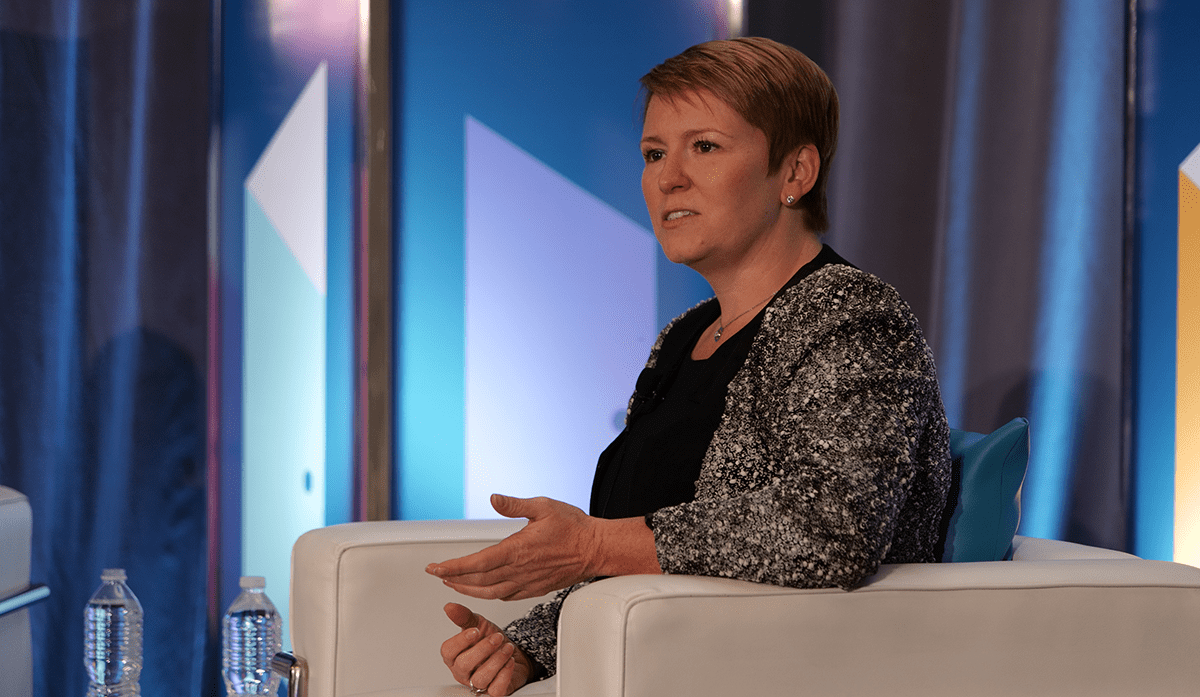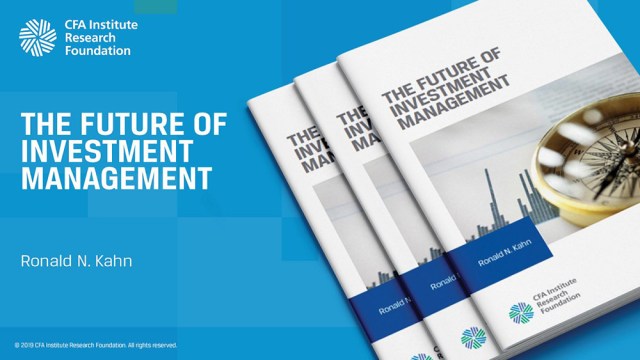[ad_1]
“There’s been a fundamental shift in the way investors are thinking about the purpose of their investments,” Heather Brilliant, CFA, told the audience at the Women in Investment Management 2019 Conference in Montréal. “Whether it’s taking on more objectives than just financial ones when considering how to allocate capital or thinking about the risks of environmental factors or broader requirements around diversity, at the institutional level and individual level, investors are ‘engaging.’”
Brilliant, the CEO and president of Diamond Hill Capital Management and former chair of the CFA Institute Board of Governors, defines engagement as “proactively, constructively, and collaboratively engaging with the management teams of the companies in which we invest.”
So what brought on the age of engagement? A big shift developed in the 1980s as more investors began to focus on corporate governance. “Over time,” Brilliant said, “governance, transparency, and visibility improved around what companies are doing to ensure they are acting in shareholders’ and other stakeholders’ best interests.”
Then, more recently, environmental issues took on greater weight, especially as investors evaluated the risks associated with the companies that composed their investment portfolios.
“Over the last decade, we’re really seeing that shift in engagement move more towards environmental concerns,” she said. “Also, now we’re in an early stage focus on the social issues coming into question across investing.”
Proxy statements are one leading indicator. More proposals oriented around environmental, social, and governance (ESG) issues have been included on proxy statements than ever before. “During the 2019 proxy season, investors voted on 177 shareholder resolutions addressing sustainability issues,” Brilliant observed. “Over the past 16 years, the level of overall shareholder support for ESG-related proposals has risen from 12% to 29%, which is an incredibly meaningful increase.”
Active and Passive Managers Are Engaging
Today, both active and passive index and exchange-traded fund (ETF) investment managers are becoming more active in engaging public company management teams around a wider range of ESG-related issues.
“Investors are taking a stance when they’re seeing outcomes that are either financially or otherwise not in the best interests of investors,” Brilliant said. They are not only engaging on governance and strategy but also working to promote director and C-suite diversity, pushing for more long-term-oriented compensation plans, raising environmental concerns, and encouraging better human capital management.
Passive investment managers are finding ways to engage with the companies in their indexes because “divestment” is not an option for them. “By definition, passive managers must own the index. They don’t define the index,” she said.
The big passive investment managers — BlackRock, Vanguard, and State Street — are the top shareholders in 40% of public companies, according to Brilliant. “Since 2017, BlackRock has increased the number of engagements with company management teams by more than 60%,” she said.
Activism vs. Active
Engagement
Most investors agree that activism and active engagement sit on a very ill-defined spectrum. “Some firms we think of as ‘activists’ are very collaborative with the management teams they work with,” Brilliant said. “Other firms that think they’re ‘engaging’ can be quite aggressive and public with their campaigns.”
What differentiates active engagement in Brilliant’s mind is a long-term, business-owner mindset. “When you have that long-term perspective, you really engage with the company and think about advocating for change on a very long-term basis,” she said. “Whereas, if you’re trying to essentially have a couple of years’ involvement so that you can quickly get out and then you don’t really care what happens to that company, or all the constituents impacted by it, that’s probably more at the other extreme.”
Does engagement work? Brilliant said that most of the data on the topic covers only short time intervals, but there is a growing body of evidence that indicates it does lead to better outcomes for investors.
A Close Link between Engagement and Valuation
Brilliant believes that valuation should be the critical underlying consideration. “With engagement you can absolutely still have the underlying intrinsic value of the business at the center of how you’re making decisions about where you will invest and then engage versus where you might sell because of valuation or other potential reasons,” she said.
Brilliant also recognized that divestment may be the only option for some investors and there is more data today that indicators excluding companies for environmental, social, or other considerations will not negatively impact performance.
“But if you’re divesting because of nonfinancial reasons, that usually means you’re not necessarily taking valuation into consideration,” she said. “What I think is worth considering on this topic is that, once you divest, you have no ability to influence that company.”
Raising the Bar as an Industry
Even if you’re not running an engagement or activist investment firm, Brilliant said that you can still have an impact through your investment decisions and by helping clients achieve their objectives — investment and otherwise.
“So what can we do as an investment management industry,
collectively, to continue to raise the bar around expectations we have for the
companies that we own?” she asked.
She urged investors to continue to increase engagement efforts with management on behalf of shareholders and combine that with long-term-oriented valuation and analysis.
She warned against the practice of greenwashing as a marketing tactic. “We are not doing ourselves a favor to start rebranding everything as sustainable or ESG,” she said.
That’s where the importance of good communication and providing high-quality, informed advice to clients comes in. “Clearly communicate about investment processes and proxy voting policies to make sure our investors are fully aware of their decisions with regard to the types of funds or capabilities that they are aligning themselves with,” she said.
Finally, she highlighted the need for more standardized terminology and reporting around engagement, ESG, and sustainable investing. “I think we need to try to move towards greater standardization so that investors know what they’re buying,” Brilliant said.
If you liked this post, don’t forget to subscribe to the Enterprising Investor.
All posts are the opinion of the author. As such, they should not be construed as investment advice, nor do the opinions expressed necessarily reflect the views of CFA Institute or the author’s employer.
Image courtesy of Michael Strathen
Professional Learning for CFA Institute Members
CFA Institute members are empowered to self-determine and self-report professional learning (PL) credits earned, including content on Enterprising Investor. Members can record credits easily using their online PL tracker.
[ad_2]
Image and article originally from blogs.cfainstitute.org. Read the original article here.



